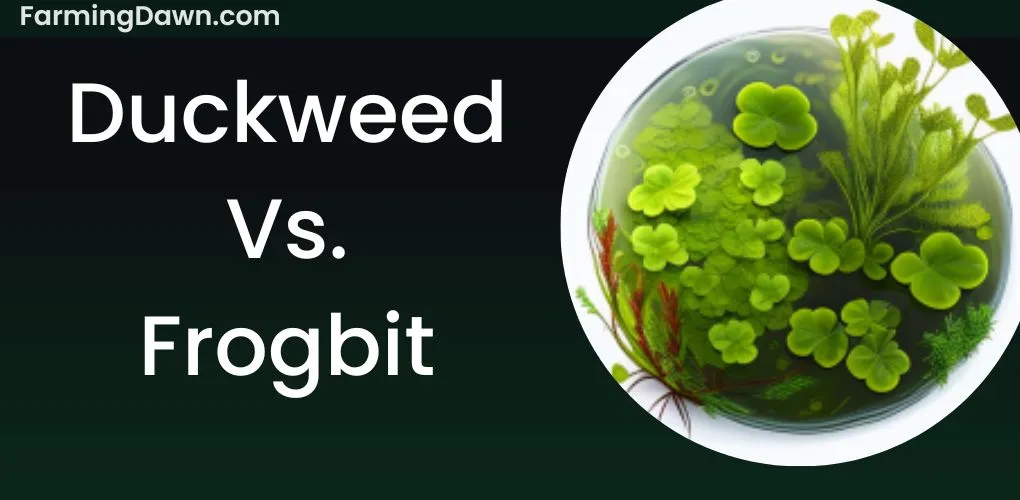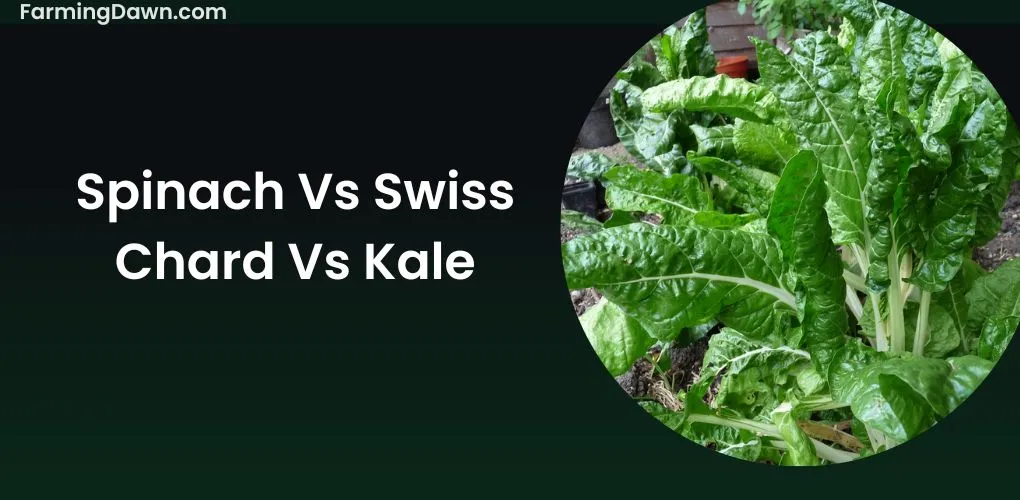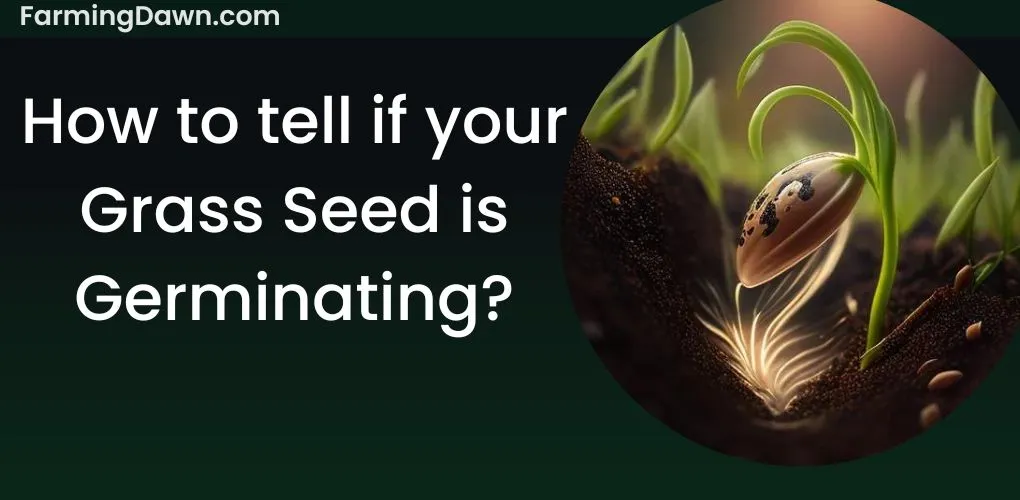Frogbit vs. Duckweed is the topic of discussion for every gardener who wants to increase the aquatic beauty of his water garden because these are the most popular floating plants. These plants not only enhance the aesthetics of your water garden but also play an essential role in preserving the ecological balance of the water body.
If you are planning to start a garden, then selecting among these four can be a confusing situation for you.
Thus, to solve your problem, I will cover their characteristics and growth habits to show you which plant is suitable for your garden.
7 key Differences While Comparing Frogbit Vs Duckweed
the 7 key differences are:
- Classification
- Leaves
- Root
- Flowers
- Growth Rate
- Maintenance
- Uses
Frogbit vs. Duckweed: Classification
Classification of Frogbit:
Hydrocharitaceae is a family of floating aquatic plants that includes Frogbit (Hydrocharis morsus-ranae). It is native to Europe and Asia and has a wide range of habitats, including stagnant and slow-flowing bodies of water. A tiny plant called Frogbit, with a maximum diameter of 5 cm, is distinguished by its elongated, emerald-green leaves that float on the water’s surface.
Additionally, the plant creates small, white blooms suspended above the water on long stems.
Classification of Duckweed:
Duckweed (Lemna minor) is another type of floating aquatic plant that belongs to the family Lemnaceae. It is endemic to Europe and Asia, like Frogbit, and can be found in various freshwater settings. Duckweed is a tiny plant that typically grows to a maximum diameter of 2 to 5 mm.
It is distinguished by its oval-shaped, floating green leaves. Duckweed does not produce flowers, unlike Frogbit, but it can quickly reproduce by fragmentation, in which a section of the plant can break off and develop into a new plant.
Duckweed Vs. Frogbit: Leaves
The enormous floating plant known as Frogbit, Limnobium laevigatum, is native to the Americas. It has round velvety leaves that grow up from 0.5 to 2 inches in diameter, with a slightly raised center that gives them a cup-like appearance.
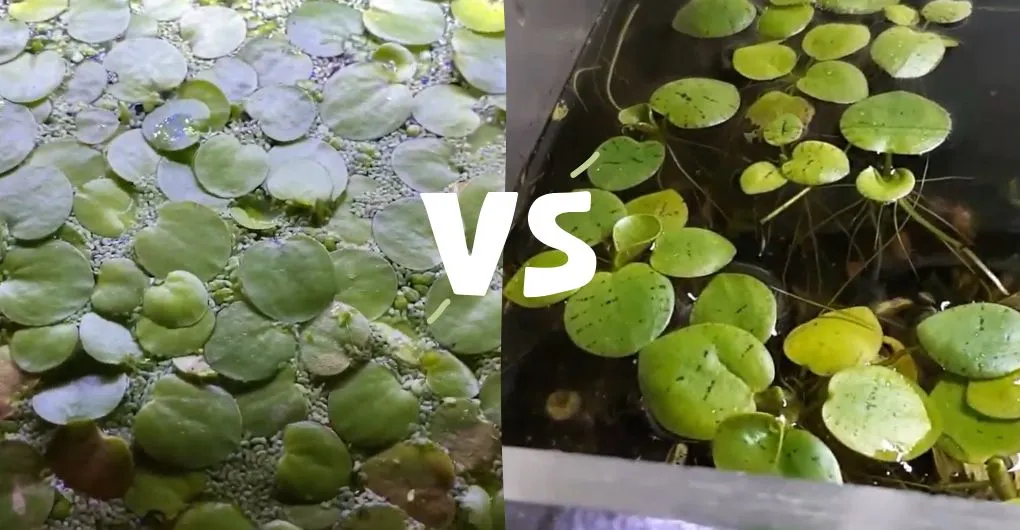
Frogbit leaves often have a green tint, although occasionally, they might have a crimson or purple hue. They are supported by lengthy stems up to 6 inches long, giving the water’s surface adequate covering.
Duckweed Leaves:
Duckweed has tiny, oval leaves that are only 1/4 inch in length compared to Frogbit. They are typically green but can take on a yellow or brown color. Duckweed is a plant that grows in groups and has a single, flat leaf that floats in the water.
Frogbit vs. Duckweed: Root
Duckweed has a straightforward root system with only one or two roots per frond (leaf). Duckweed contains:
Roots.
- Small, straight leaves that are frequently smaller than a millimeter.
- Tiny blooms formed above the water’s surface.
These roots are fibrous and hang downward from the plant, anchoring the plant in place and absorbing nutrients and water from the surrounding environment.
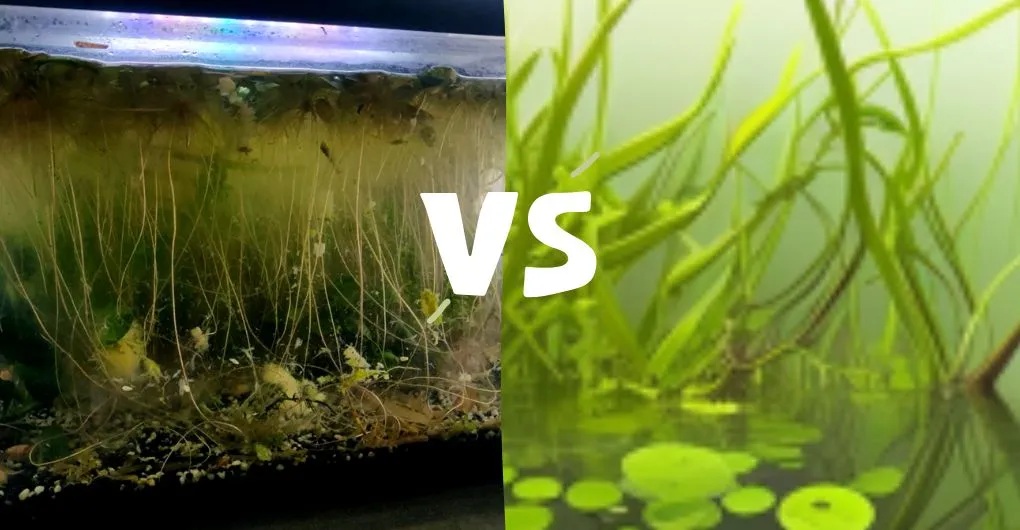
Frogbit Roots:
Instead of growing long, deep roots like Duckweed, Frogbit has:
- short, fibrous roots
- that extend from the base of the plant and hang down into the water.
The plant receives the nutrition it needs to thrive from these roots, which are covered in microscopic hairs that collect nutrients from the water.
The roots take up nutrients and act as anchors to keep the plant in place and stop it from moving.
Frogbit vs. Duckweed: Flowers
Frogbit has tiny, delicate, lovely blossoms that grow above the water’s surface. The flowers feature a yellow core and three white petals composed of many tiny stamens. These are typically grouped and have a strong fragrance that draws pollinators like bees and butterflies.
Frogbit is an aquatic plant, and many aquatic insects and other small creatures rely on its blossoms as a significant source of food. Its blossoms are an essential component of the ecology since they serve as a haven for several aquatic animals and provide oxygen for the water through photosynthesis.
Duckweed, unlike Frogbit, has tiny blossoms that are hard to see. These flowers are often less than 2mm, making them tiny and unnoticeable. Typically, they are in the middle of the plant, surrounded by its leaves. These small blossoms are essential to the plant’s ability to reproduce despite their modest size.
Duckweed does not always produce flowers due to its simple structure, but if it does, then they are tiny.
Frogbit vs. Duckweed: Growth Rate
Duckweed has a rapid growth rate that can range from 0.5 to 2.0 grams of fresh weight every day. This rapid growth is caused by a number of elements, including the plant’s compact size, practical nutrient usage, and fast reproductive rate.
Because of its straightforward structure, Duckweed can sprout new branches in as little as 24 to 48 hours. Furthermore, Duckweed is a viable crop for mass production because it can double its biomass in as little as 2-3 days.
How Fast does Frogbit grow?
Frogbit tends to develop more slowly than Duckweed, but its leaves are larger and more stable, making it a better option for creating a dense mat on the water’s surface. Under ideal circumstances, it can grow up to 1 inch per day, continuously producing new roots and leaves.
The plant prefers warm temperatures, high humidity, and a good light source.
Frogbit vs. Duckweed: Maintenance
In your water garden, Duckweed may quickly develop out of control and occasionally become a nuisance. Maintaining good water chemistry and routinely removing any extra duckweed is crucial to preventing this.
Frogbit needs more upkeep than Duckweed because it is slightly more sensitive to water conditions. It needs more stable water chemistry and prefers cooler water temps to grow. Frogbit needs to be trimmed and free of debris to avoid the plant going bad and lowering the aquarium’s water quality.
In terms of maintenance, Duckweed is less difficult to maintain of the two. It is easier to maintain and more tolerant of changing water conditions. Frogbit might be a better option, though, if you’re seeking a floating plant that is more aesthetically pleasing.
Although it needs more upkeep, aquarium hobbyists favor it because of its delicate appearance and slower development rate.
Duckweed vs. Frogbit: Uses
As I already explained above, Frogbit has floating leaves that provide shade and cover for fish and other aquatic creatures, helping to create a more natural and healthier environment for them to live in.
Their roots also contribute to keeping the water clean by absorbing extra nutrients, limiting the formation of algae, and preserving water clarity. Fish, snails, and other herbivores in the ecosystem can also find food in the plant.
Duckweed is high in protein, and just like Frogbit, it can be used as a food source for livestock and fish. It also acts as a natural fertilizer by removing extra nitrogen and phosphorus from the water, lowering water pollution.
Additionally, it aids in the removal of heavy metals, bacteria, and other contaminants from water, making it useful for wastewater treatment. Due to its rapid growth and ability to be produced on marginal terrain unsuitable for other crops, Duckweed is being investigated as a potential source of biofuel in some nations.
Is Duckweed Algae?
No, Duckweed is not algae. Duckweed is a type of floating aquatic and flowering plant that is often mistaken for algae. It typically grows as dense green mats on the surface of motionless bodies of water like ponds and lakes.
While Duckweed may resemble algae in its appearance and rapid growth rate, it differs significantly in its structure and reproduction. In contrast to algae, Duckweed has a distinct root system, flowers, and seeds. Duckweed can also photosynthesize, which makes it an important source of food and oxygen for aquatic life.
Watch a Video on Frogbit Vs. Duckweed
Frogbit Vs. Duckweed: Final Thoughts
Our topic of discussion, Frogbit vs. Duckweed, comes to an end. To conclude, I would say that each of these plants has its characteristics and disadvantages as aquatic plants. Selecting among the two depends on what you desire to plant in your garden.
If you have any other questions, you can ask me in the comments. Thank you!
Every plant has a unique growth pattern and characteristics. Read my other articles to learn more:

